Echinacea Garden Ideas: Easy Tips for a Vibrant Yard
Looking to add some beauty and interest to your garden? Consider echinacea, a vibrant and versatile flower that thrives in various environments. Known for its bright blooms and easy care, echinacea can be an excellent choice for both beginners and experienced gardeners.
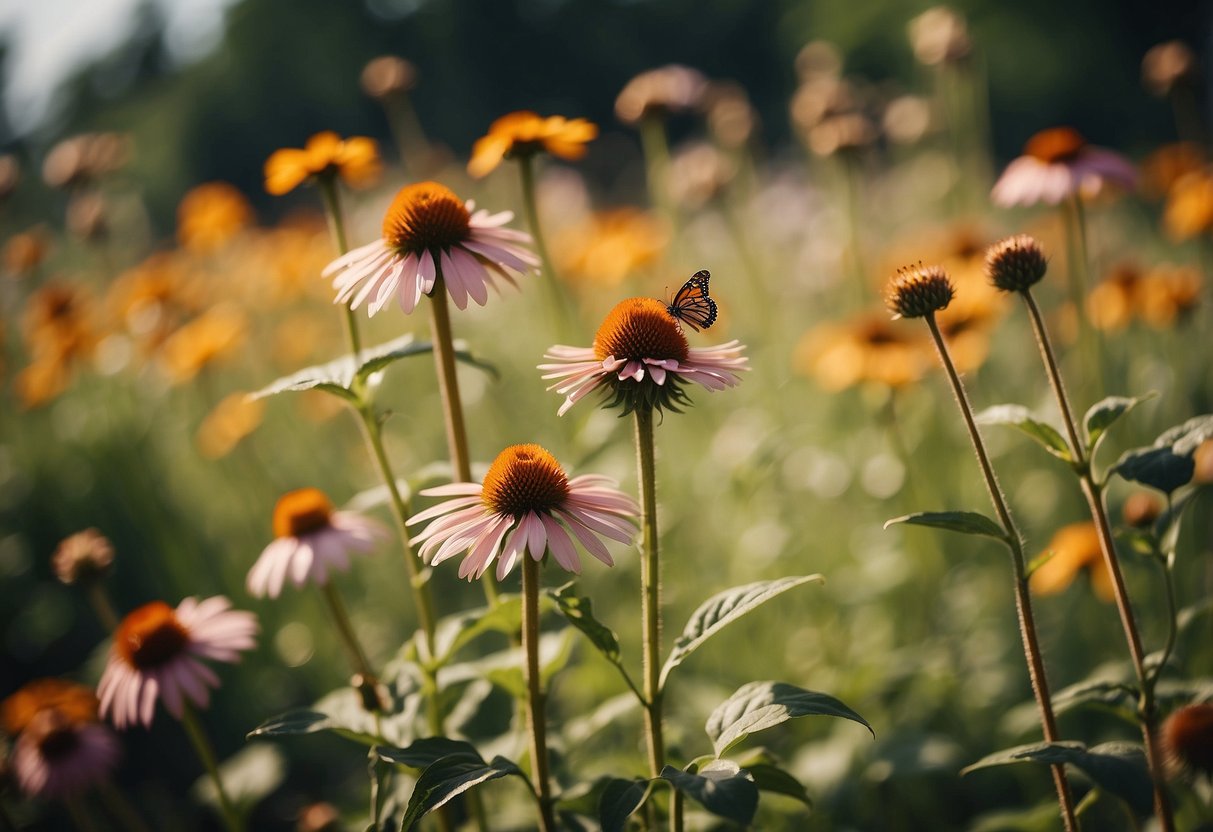
What makes echinacea special is its ability to attract pollinators while providing stunning visual appeal throughout the growing season. Whether you want to create mass plantings for a bold statement or add an elegant touch to a mixed border, echinacea offers endless possibilities. Get ready to explore creative ways to incorporate this lovely flower into your garden.
1) Heritage Echinacea Mix
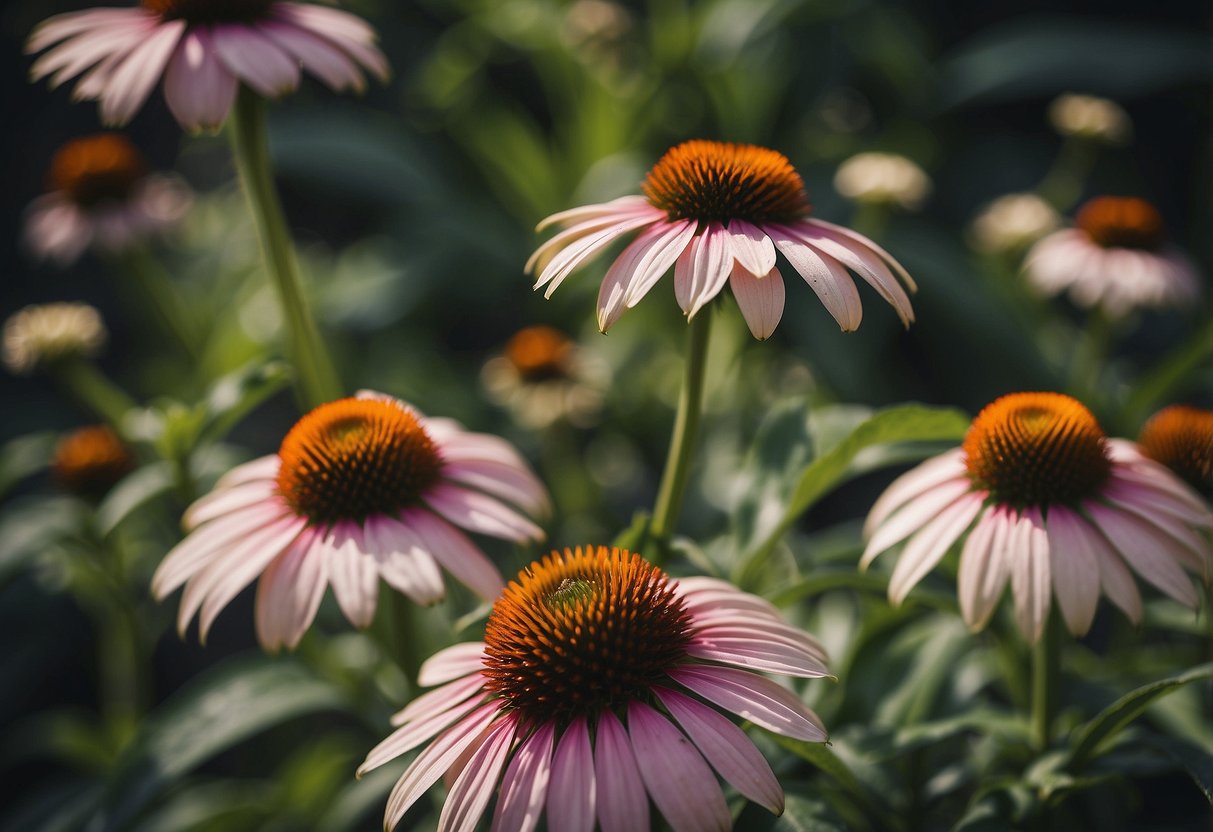
You can create a stunning Heritage Echinacea Mix by planting different traditional varieties together. These classic varieties come in shades of purple, pink, yellow, and orange.
Mixing different colors will make your garden pop. Echinacea flowers thrive in full sun and well-drained soil.
Try pairing them with companion plants like catmint or black-eyed Susan for a lush garden display.
2) Prairie Splendor Echinacea

Prairie Splendor Echinacea is a charming variety for any garden. This plant stands out with its bright rose-magenta petals and a large orange cone in the center. It typically grows up to 2 feet tall, staying compact and manageable.
This type of Echinacea blooms earlier than most, starting in late June and lasting until the first frost. It’s perfect for sunny borders or as cut flowers. Unlike some others, Prairie Splendor flowers well even in the first year from seed. It’s a robust choice for adding color and life to your garden.
3) Echinacea ‘Cheyenne Spirit’

Echinacea ‘Cheyenne Spirit’ is a vibrant and hardy coneflower. It’s known for its early blooms from early to late summer and sometimes even until frost.
This plant grows up to 2-3 feet tall and needs minimal water and care. You can plant it in full sun and well-draining soil.
‘Cheyenne Spirit’ attracts bees, butterflies, and hummingbirds. It’s perfect for perennial borders, prairies, or cottage gardens. Plus, it’s winter-hardy and doesn’t require much maintenance. Check out more details here.
4) PowWow Wild Berry Coneflower

PowWow Wild Berry Coneflower is a standout in any garden. It has bright, deep purple-pink flowers that hold their color well.
This plant blooms all summer long without needing deadheading.
For best results, plant it in full sun with average to dry soil conditions. The PowWow Wild Berry reaches about 2 feet tall and thrives in smaller gardens or containers. Find more about its characteristics and cultivation at Gardenia.
5) Echinacea ‘Butterfly Kisses’

Echinacea ‘Butterfly Kisses’ is a beautiful and compact coneflower. It features large, bright pink flowers with a darker central cone.
This plant thrives in sunny spots and well-drained soil. It’s drought-tolerant once established.
It’s a great choice for adding color from midsummer until frost. Attracts butterflies and bees, making it perfect for pollinator gardens. You can read more about its growing needs on Gardenia’s page about Echinacea ‘Butterfly Kisses’.
6) White Swan Echinacea
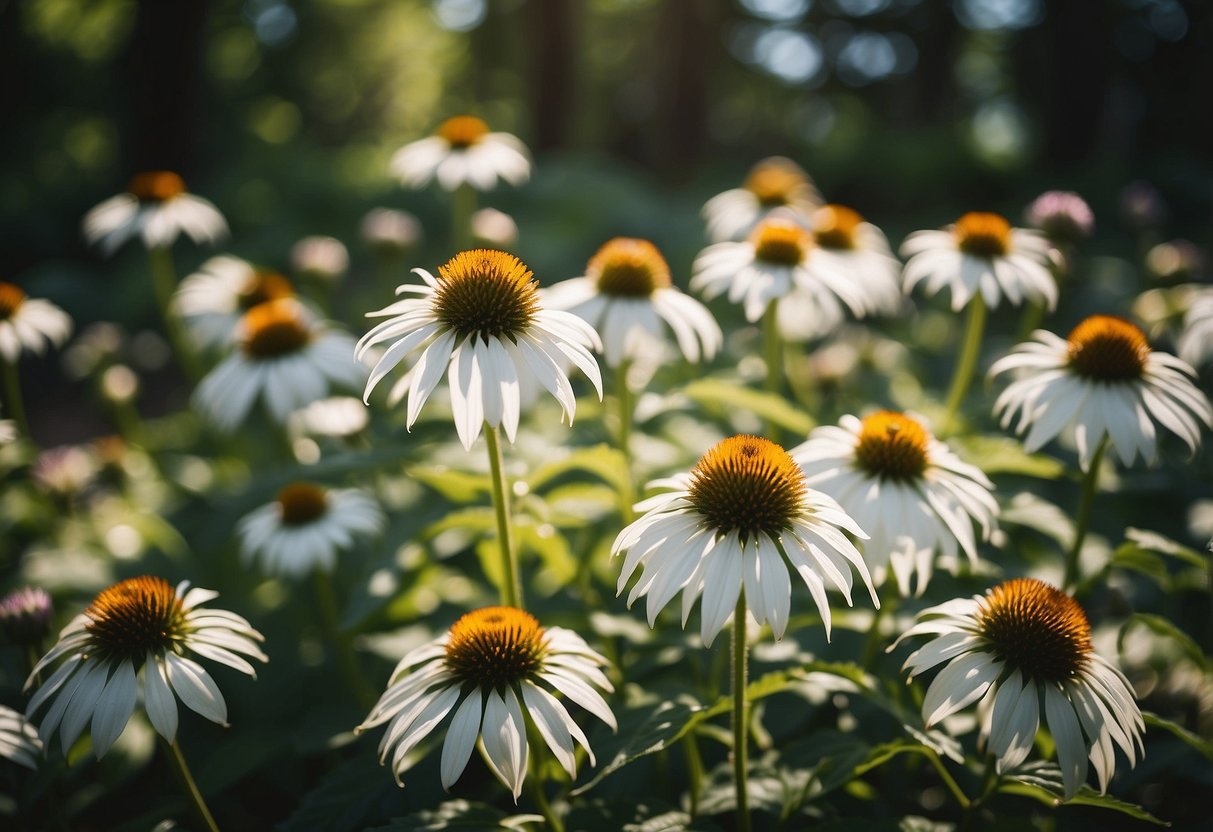
White Swan Echinacea is a lovely choice for your garden. It features large, pure white petals that reflex away from a coppery-brown, spiky center. These flowers are both elegant and eye-catching, adding charm to any space.
This perennial blooms from early to late summer and can continue sporadically until frost. You will enjoy the sweet honey scent that fills the air when it’s in bloom.
It’s perfect for perennial borders and prairies, making it a versatile addition to your garden. You can learn more about this beautiful plant on Gardenia.
7) Echinacea Purpurea

Echinacea purpurea, also known as purple coneflower, is a beautiful addition to any garden. Its striking pinkish-purple petals and cone-shaped center attract butterflies and pollinators.
These flowers can grow between 24-36 inches tall. They are hardy and thrive in full sun and well-drained soil. Planting them in groups will create a stunning visual effect.
You can propagate Echinacea purpurea through seeds, division, or root cuttings. This makes it easy to expand your garden with this vibrant plant.
8) Echinacea ‘Green Twister’

Echinacea ‘Green Twister’ stands out with its eye-catching lime-green petals that fade to lilac-pink and carmine near their central cone. This coneflower variety blooms from mid to late summer, adding a burst of color to your garden.
Its sturdy, upright stems make it a reliable choice for borders and flower beds. Plant it in well-drained soil and ensure it gets plenty of sunlight for the best results.
You can learn more about Echinacea ‘Green Twister’ from this detailed guide.
9) Echinacea ‘Orange Skipper’
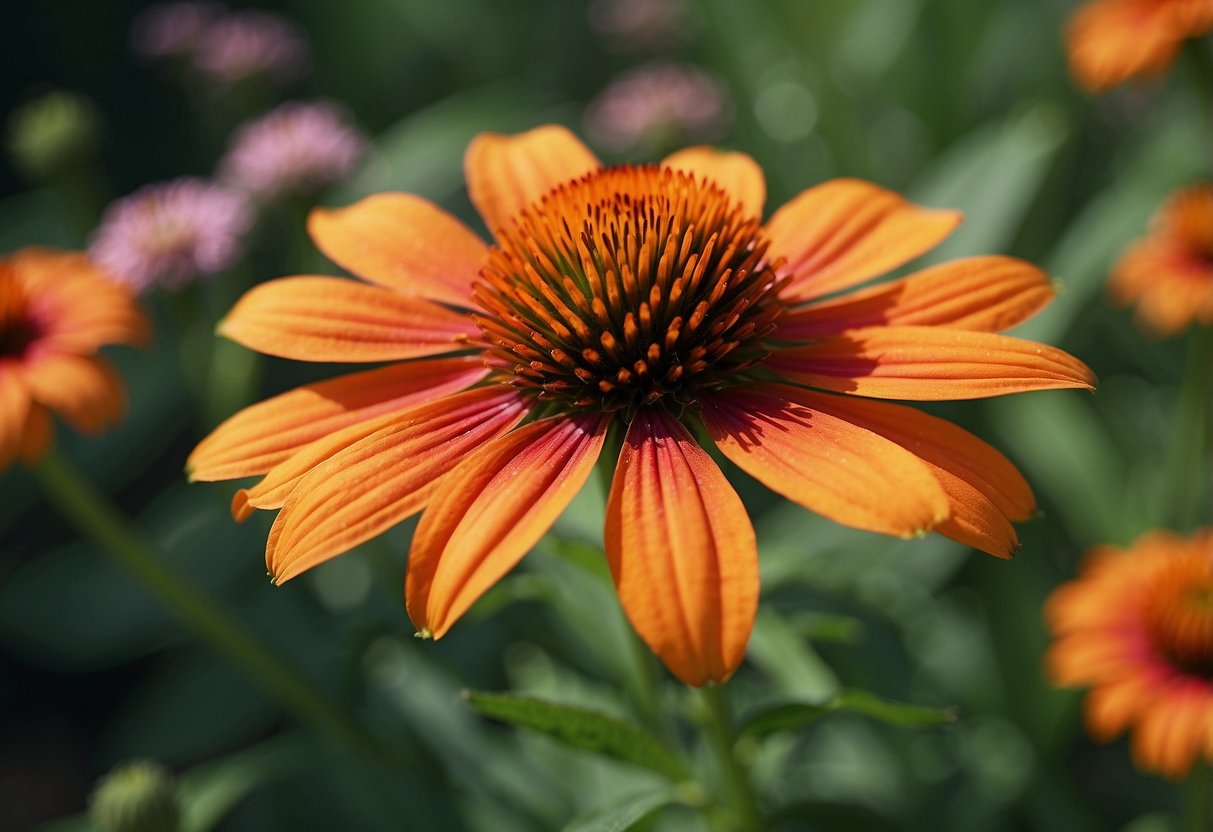
Echinacea ‘Orange Skipper’ is a compact and sturdy plant. It often reaches its mature size in its first growing season. This coneflower stands about 18 inches tall when in bloom.
You will love its vibrant tangerine-orange petals. The flowers have a burnt-orange center cone that really stands out. These blooms last through summer and into fall.
Butterflies are drawn to this plant. It brings a lively and colorful atmosphere to your garden. You can expect lots of visits from these beautiful insects. Enjoy the bright and cheerful addition to your outdoor space.
10) Pica Bella Echinacea

Pica Bella Echinacea is a compact variety of the purple coneflower. It typically grows to a height of around 31 inches. This makes it perfect for smaller gardens.
The flowers have narrow, quilled mauve-pink petals that surround a large, rust-orange cone. They are striking and unique.
This variety blooms from mid-June to the end of August. It’s great for sunny borders and containers. Ideal for cutting if you enjoy fresh flowers indoors.
You can learn more about Pica Bella Echinacea and its care online.
Understanding Echinacea
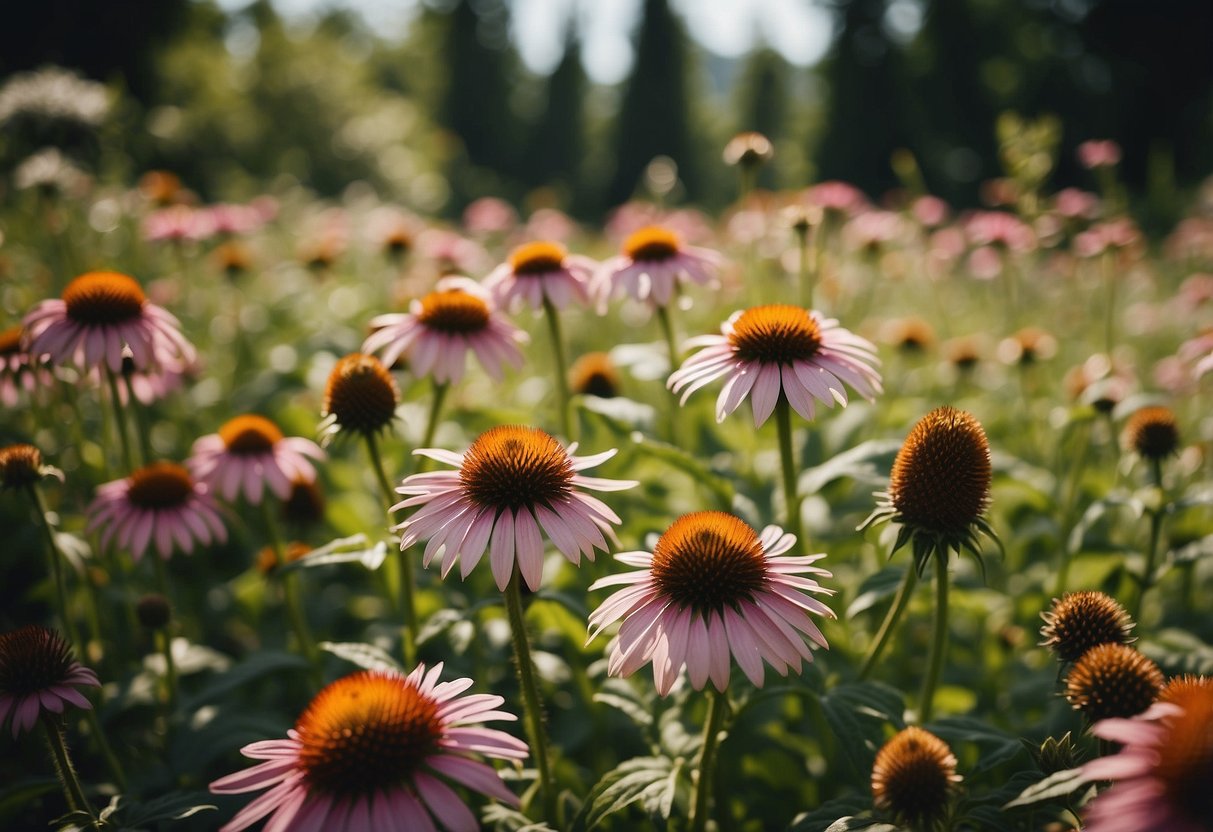
Echinacea, commonly called coneflower, is a popular garden plant known for its vibrant flowers and medicinal properties. It is especially valued for boosting the immune system and is easy to grow in most gardens.
What is Echinacea?
Echinacea is a genus of flowering plants in the daisy family. These plants are native to North America and are known for their distinctive, cone-shaped flower heads. The most common species used in gardens are Echinacea purpurea and Echinacea angustifolia.
Echinacea plants can grow up to 4 feet tall and feature vibrant petals in shades of pink, purple, and white. They attract pollinators like bees and butterflies, making them a great choice for eco-friendly gardens. Echinacea is also drought-tolerant and thrives in well-draining soil with plenty of sunlight.
To plant Echinacea, choose a sunny spot and dig a hole twice the size of the pot. Make sure the top of the root ball is level with the soil. Backfill the hole, firm the soil, and water well. For more details on planting, you can visit this guide.
Health Benefits of Echinacea
Echinacea is widely praised for its health benefits, particularly in boosting the immune system. It’s rich in active compounds like alkamides, phenolic acids, and polysaccharides, which help enhance immune function.
Regular consumption of Echinacea supplements can help reduce the incidence and duration of colds and other infections. It stimulates the immune cells, making your body more efficient at fighting off illnesses. For a detailed look at its health benefits, check out this resource.
Beyond immunity, Echinacea has anti-inflammatory properties, aiding in the relief of sore throats and other inflammatory conditions. Its extracts are commonly found in teas, capsules, and tinctures, making it easy to incorporate into your wellness routine.
Planning Your Echinacea Garden

When planning your Echinacea garden, it’s important to focus on choosing the right location and meeting the soil requirements. This ensures healthy growth and vibrant blooms.
Choosing the Right Location
Echinacea, also known as coneflower, thrives in full sun. Aim for at least six hours of sunlight per day. These perennials do best in areas with good air circulation, helping to prevent disease.
Consider the landscape of your garden. Echinacea plants reach heights of 2 to 5 feet, making them ideal for a background or middle layer in garden beds. They mix well with other sunny perennials like black-eyed Susan and bee balm, creating a colorful and attractive display.
If you’re planting in a more confined space, like a rock garden, compact varieties of Echinacea can add splashes of color. Just ensure they have enough space to avoid overcrowding, about 1 to 3 feet apart, depending upon the variety.
Soil Requirements
Echinacea plants are quite adaptable but prefer well-draining soil. They perform best in soil with a pH between 6.0 and 7.0. Adding organic matter like compost can improve soil structure and fertility.
Avoid areas where water collects, as soggy soil can lead to root rot. If your soil is clay-heavy, consider raising your garden bed.
Before planting, loosen the soil to a depth of about 12 inches. Mixing in some sand can help with drainage. Once planted, mulch around your Echinacea to help retain moisture and reduce weeds.
By taking these steps, you can create a thriving Echinacea garden that will grace your yard with beautiful blooms and attract pollinators.







